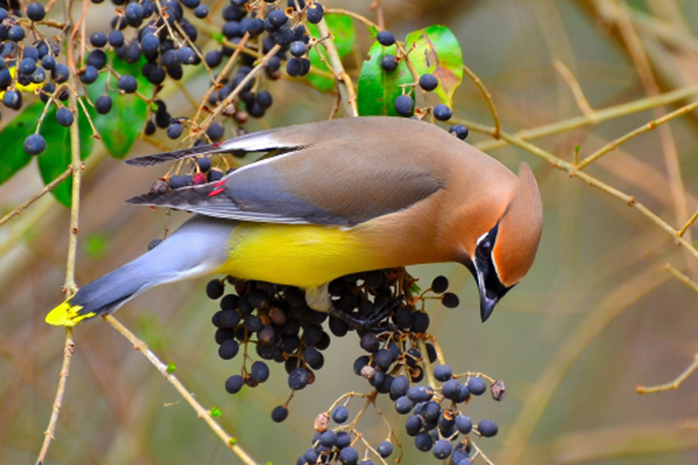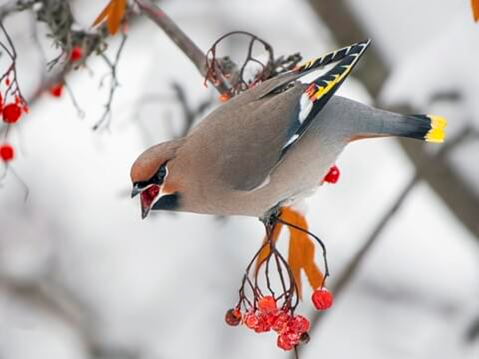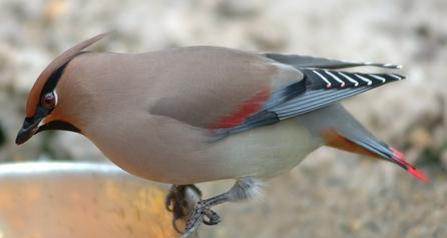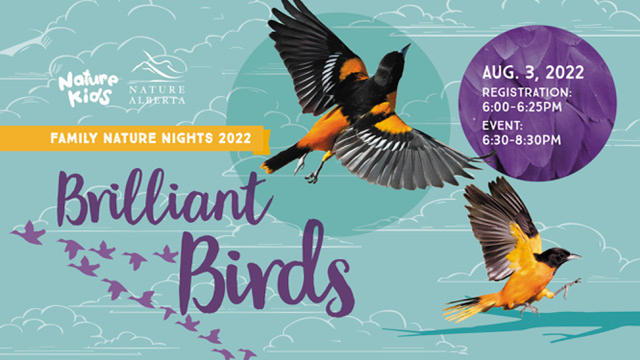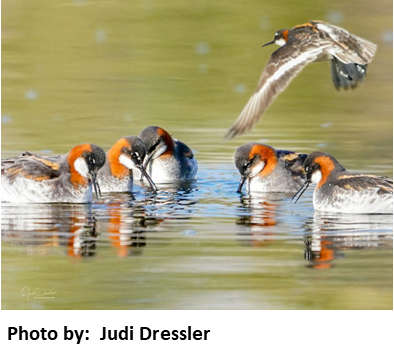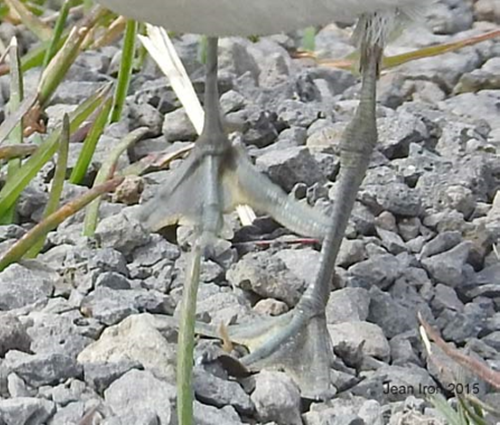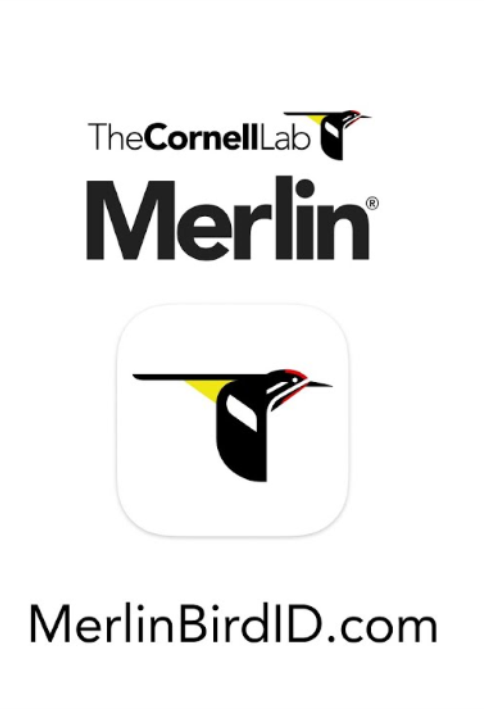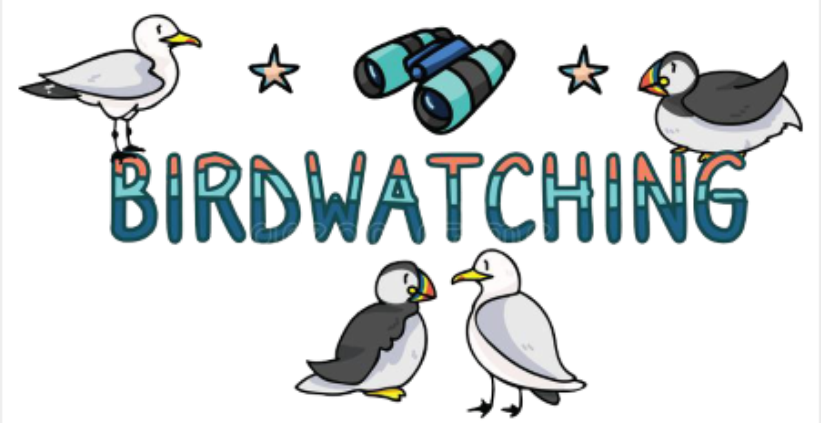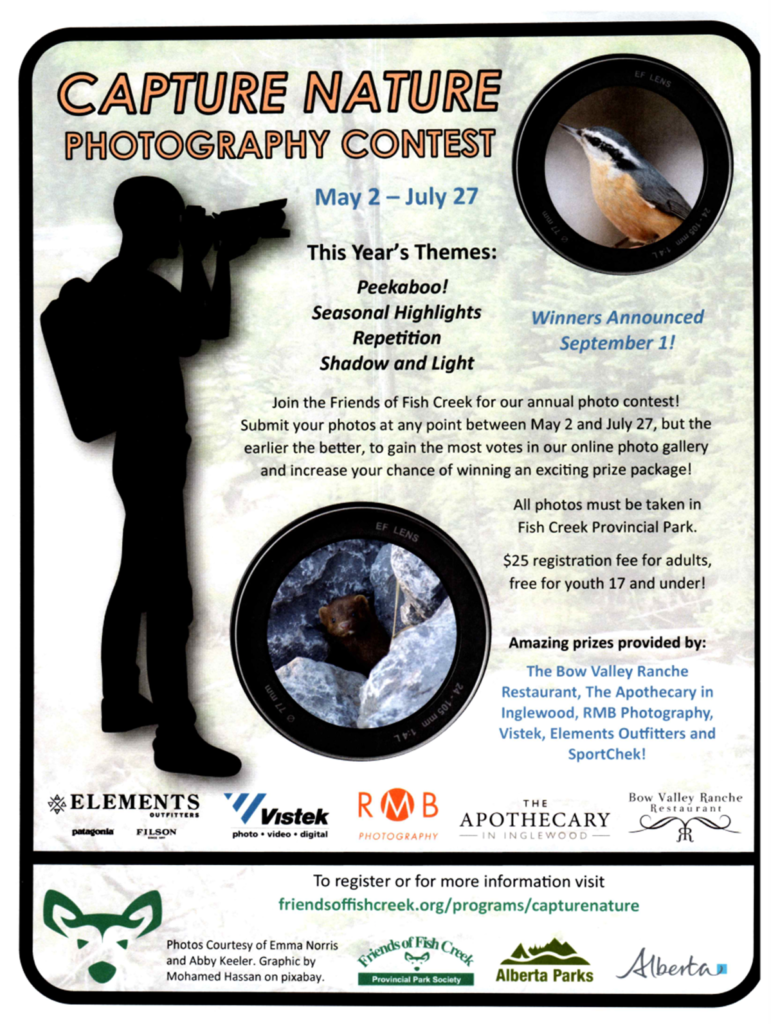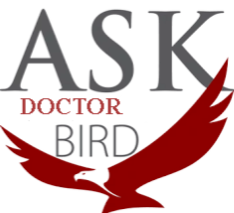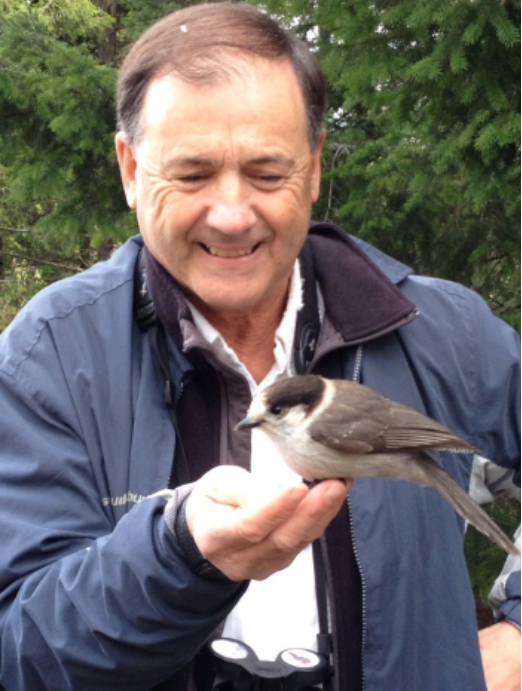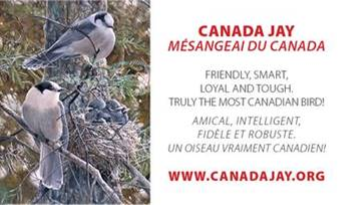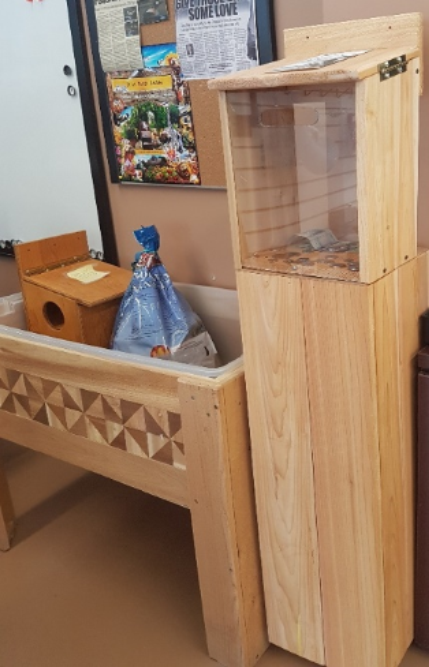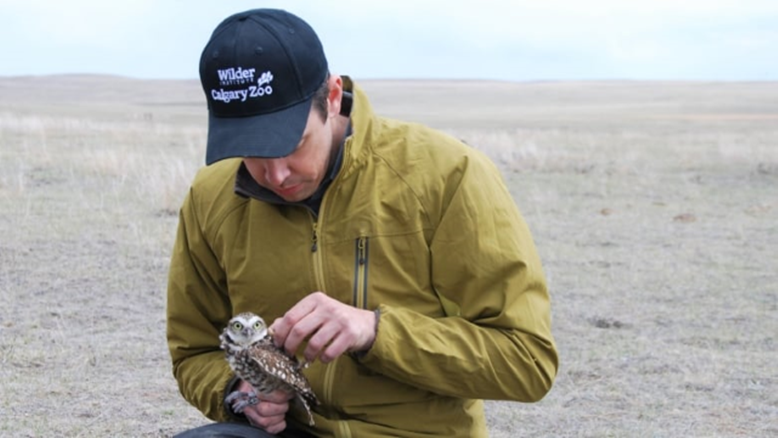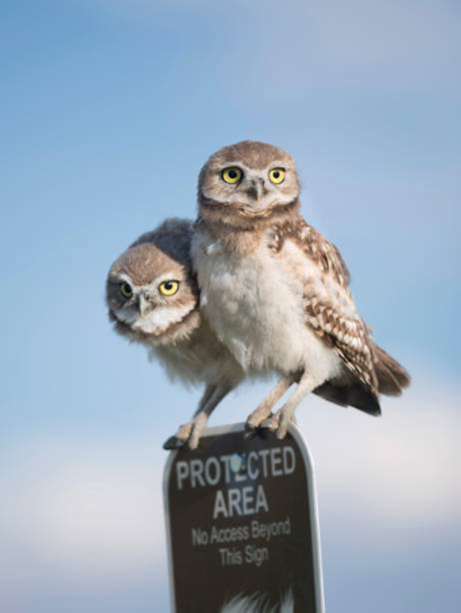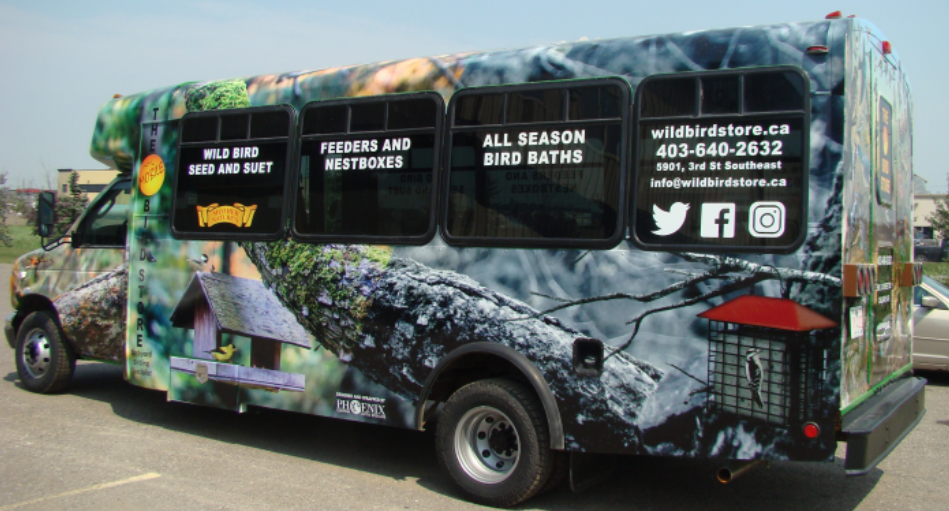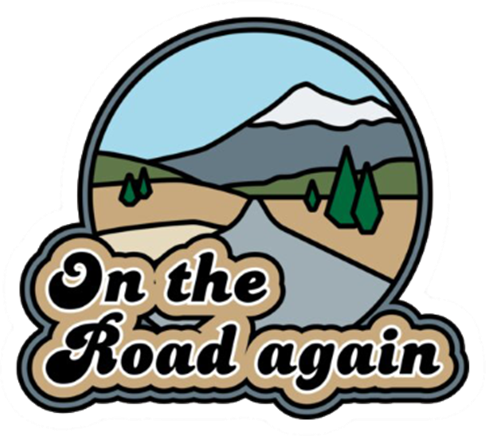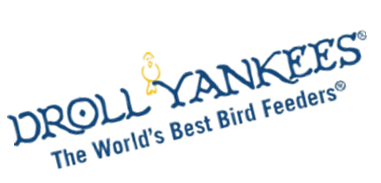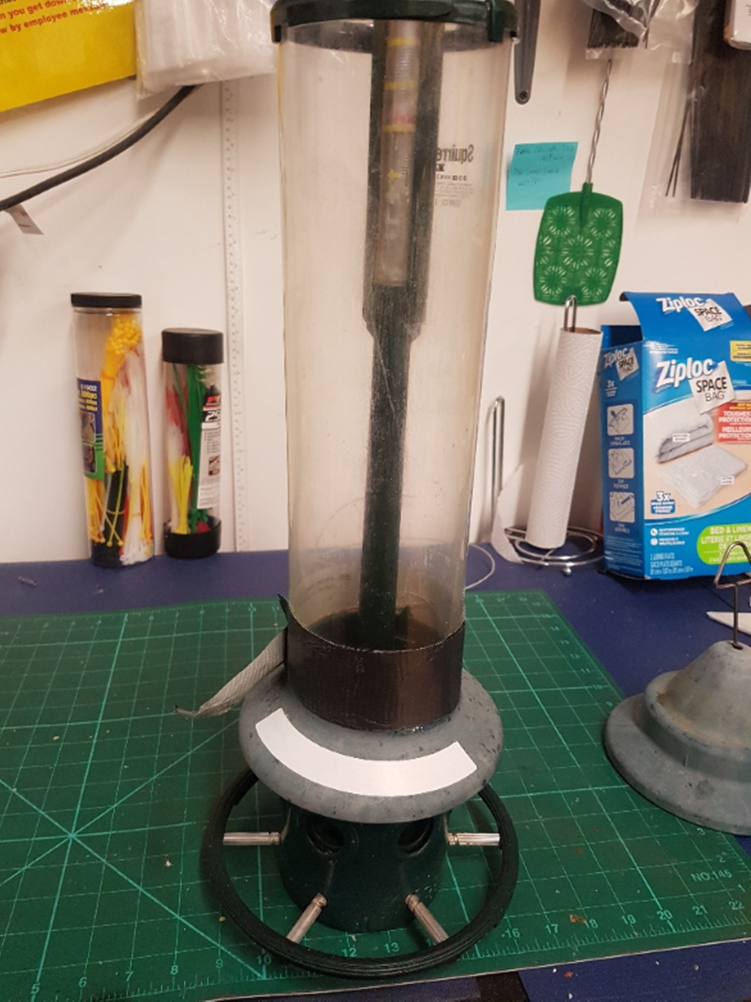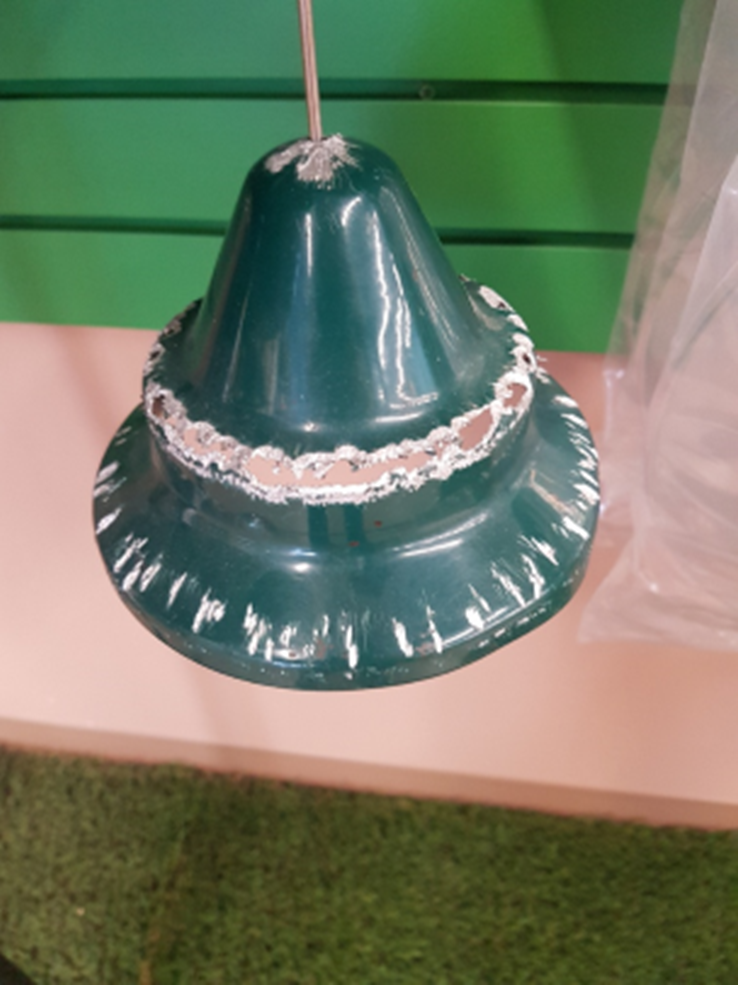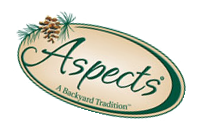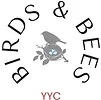LINK TO PDF NEWSLETTER DOWNLOAD



Worldwide there are three species of waxwings: Cedar, Bohemian (both can be seen throughout North America) and Japanese. The Cedar waxwing gets its name in part due to the brightly coloured wax-like tips on their feathers. “Cedar” comes from their consumption of juniper berries. While several different trees have the word “cedar” in their common name, one, the eastern red cedar (Juniperus virginiana) which is actually a juniper, has blue fruit that these waxwings eat.
The Cedar waxwing’s genus name, Bombycilla, means “silk-tail” and refers to its dapper-looking plumage. The species name, cedorum, is Latin for “of the cedars” and reflects its fondness for the small cones of the eastern red cedar.
Cedar waxwings with orange instead of yellow tail tips began appearing in the north-eastern U.S. and southwestern Canada in the 1960s. The orange colour is the result of a red pigment picked up from the berries of an introduced species of honeysuckle. If a waxwing eats enough of the berries while it is growing a tail feather, the tip of the feathers will be orange.
Cedar waxwings are a highly specialized frugivorous (an animal feeding on fruit) species, exhibiting almost full reliance on sugary fruits, unlike other fruit-eating passerines that exhibit only opportunistic frugivory when other food sources are in poor supply. Their efficient digestion of fruits containing simple sugars allows them to persist off of fruit alone, while other fruit-eating passerines found subsiding on fruit alone to be a fatal task. Reliance on primarily fruit alone occurs until fruit cessation in the spring when the birds start to feed on insects and flowers
Within its range, Cedar waxwings move nomadically in response to food supplies, and is an important and very effective seed disperser.
Young are fed on insects for the first two days, then solely on regurgitated fruits, leaving the nest around 15 days later. This fruit-based diet ensures that any parasitic Brown-headed cowbirds hatching in their nests do not survive.
· Cedar waxwings are the most specialized fruit-eating birds. Rather than regurgitating the fruit seeds, they eliminate them with their waste
· Even though Bohemian waxwings are only about an inch longer than Cedar waxwings, they are nearly double their weight—Bohemians are chunky, Cedars are svelte
· A group of waxwings are collectively known as an “ear-full” and a “museum” of waxwings
When: Wednesday, August 3, 2022. Registration at 6:00pm; Activities begin at 6:30pm
Where: Weaselhead Park, Calgary
What: Grab your FREE pair of Nature Kids binoculars to go birding with the Weaselhead/Glenmore Park Preservation Society and participate in family activities to learn all about our feathered friends with nature Calgary
The English and genus names for “phalarope” come through French phalarope and scientice Latin Phalaropus from Ancient Greek phalaris “coot”, and pous, “foot”. Coots and Phalaropes both have lobed toes. Phalaropes also have a unique way of nesting. The female lays her eggs in nothing more than a scrape on the ground and then abandons the eggs leaving the male to tend to them. Later, the male tidies the scrape and arranges the surrounding vegetation to hide the nest. Phalaropes differ from most bird species as the female is more colourful than the male. There are 3 phalaropes all can be seen in Canada: Red-necked phalarope, Red phalarope and Wilson’s phalarope.
Have you checked out the Merlin app? Would you like a demonstration on how they will help you to identify birds? Stop by The Wild Bird Store during regular business hours and staff will be happy to show you how the app will enable you to identify birds in various ways.
Identify Bird Songs and Calls
Identify Birds by your Photos
Save Birds to Your Life List
Explore lists of birds near your location

Contact Meadowlark Birding Tours (403)519-8703
gmckinnonbird@gmail.com
Set-Date Tours
Set-date tours are scheduled many months if not years in advance to maximize enjoyment and birding opportunities. The group size for these tours can range between four and ten participants depending on logistics, focus of the tour and location. These tours can be viewed and booked anytime through our website.
Calgary Day Trips
Calgary day trips are tailored to fit your exact needs and circumstances as well as your personal goals. Do you want to spend a day of targeting specific birds you need for your life list? Maximize the number of species? Or even just a casual stroll through a local park? All of these can be arranged to fit your preferences and schedule.
The Wild Bird Store is pleased to announce that we will be carrying the print edition of NATURE ALBERTA May 2022 in our store. This is the only place in Calgary to get a copy without a subscription. Look for it in-store May 1st.
In the Spring issue of NATURE ALBERTA magazine, Alberta’s waterways will be explored with paddling expert Mark Lund. Also, Biologist Lorne Fitch examines the strain irrigation expansion plans will put on southern Alberta’s river systems. And the spectacular wildlife photography of Rick Price practically flies off the page!
As always, the Nature Kids section is filled with info and activities to inspire the next generation of naturalists!
Retail Price per copy: $9.99 +GST
All participants on any bird walk must have purchased a ticket through Eventbrite.ca and present the ticket to Jim prior to the bird walk. The weather plays a big part in bird walks and Jim reminds participants to dress anticipating weather changes and to carry water to keep hydrated.
Saturday July 9, 2022 Burnsmead in Fish Creek Park
(9:00am meet in parking lot at Burnsmead ).
Ticket price: $6.00 +GST +fees
Ticket must be purchased through Eventbrite.ca—2022 WBS bird walks
Saturday July 23, 2022 Ralph Klein Park
(Meet at park off 84 Street S.E. about 2km south of Shepard. Access off 114 Avenue at Stoney Trail)
Ticket price: $6.00 +GST +fees
Ticket must be purchased through Eventbrite.ca—2022 WBS bird walks
Question:
Is it true that praying mantises kill and eat hummingbirds?
Answer:
Once again, we humans are meddling with nature and this time, it is our hummingbirds that are paying the price. According to a study published in the Wilson Journal of Ornithology, praying mantises worldwide are eating small birds, and in the U.S. the main victims are hummingbirds. These light green stick-like insects are, of course, famous (or infamous) for devouring their own mates after sex. They often include various insects and spiders in their diet, along with the occasional frog, lizard, salamander and even snakes. Birds as victims is a much more widespread phenomenon than previously thought. Zoologists from Switzerland and the U.S. teamed up to review the literature on this predatory behavior of 12 different species of mantises and came up with no less than 24 bird species in thirteen different countries and on all continents except Antarctica. But that’s not the worst of it—we humans are ultimately to blame for this growing trend of mantises hunting birds! Of almost 150 cases, more than 70 percent occurred in backyards in the U.S. where praying mantises grab hummers from feeders or from frequently visited garden flowers. The ruby-throated hummingbird is the most often caught. Decades ago, we released alien species of mantises such as the European and Chinese species as a popular form of biological pest control. Now these mantises are everywhere (thankfully not in Alberta) and devouring our hummingbirds. If you see a praying mantis in your backyard, especially on your hummingbird feeder or garden flowers, by all means enjoy its beauty and grace….but also make sure it does not eat your local hummingbird friends. They have got enough problems to contend with!
David M. Bird, Ph.D., Emeritus Professor of Wildlife Biology, McGill University www.askprofessorbird.com

David M. Bird is Emeritus Professor of Wildlife Biology and the former Director of the Avian Science and Conservation Centre at McGill University. As a past-president of the Society of Canadian Ornithologists, a former board member with Birds Canada, a Fellow of both the American Ornithological Society and the International Ornithological Union, he has received several awards for his conservation and public education efforts. Dr. Bird is a regular columnist on birds for Bird Watcher’s Digest and Canadian Wildlife magazines and is the author of several books and over 200 peer-reviewed scientific publications. He is the consultant editor for multiple editions of DK Canada’s Birds of Canada, Birds of Eastern Canada, Birds of Western Canada, and Pocket Birds of Canada. To know more about him, visit www.askprofessorbird.com or email david.bird@mcgill.ca.
CANADIAN ORNITHOLOGISTS CALL ON FEDERAL GOVERNMENT FOR A NATIONAL BIRD!!
On June 9, 2022, a copy of a promotional book entitled “The Canada Jay as Canada’s National Bird?” has been given to each and every one of Canada’s 338 Federal Members of Parliament, including The Honourable Pablo Rodriquez, Minister of Canadian Heritage and Multiculturalism, and The Honourable Steven Guilbeault, Minister of Environment and Climate Change Canada. The prime message in the classy-looking colourful book of 80 pages is to encourage the Federal government to take steps to adopt a National Bird for Canada, and hopefully to take it a step further—to make that bird the Canada Jay!
Why does Canada even need a National Bird, you may well ask? One in five Canadians spends an average third of their year watching, feeding and/or photographing birds, representing big bucks for our economy! Birds also eat pests, pollinate our plants and crops, dispense seeds: their eggs and meat (yes, chickens are birds!) feed us and their feathers keep us warm. Birds save human lives by globally warning us of environmental health hazards such as carcinogenic pesticides and industrial by-products. As for their intrinsic value, how many great writers, artists, film makers and even aviators and astronauts have been inspired by the beauty, the song and the flight of these amazing unique creatures? Wikipedia’s List of National Birds indicates that 106 of the world’s 195 countries have official birds. For example, the U.S. take a lot of national pride in their National Bird—the Bald eagle. But Canada is not in the list—we do not have one! Yet our country does have national symbols—the beaver, the maple tree, two sports and even a national horse! But alas—no official bird.
For a National Bird for Canada, one could not find a more Canadian bird than the aptly named Canada jay! This very smart corvid breeds in every province and territory and its range almost mirrors our country’s borders. It is extremely friendly, often landing on an outstretched palm and it is extremely hardy—often incubating eggs at -20 degrees C, resides year-round in our country, and is found in all provinces. Its French name is le mésangeai du Canada and its popular name, whiskyjack, is derived from one of the largest indigenous language groups in Canada. Canada jays have played a prominent role in both indigenous culture and our country’s history. Importantly, unlike the Common loon (Ontario) and the Snowy owl (Quebec), Canada jays are not the bird of any province!
At this moment the petition to get the Canada jay as Canada’s official bird has approximately 15,000 signatures, but there is a need to get this to at least 100,000 before it gets the Federal government’s attention. Please visit the web site: www.canadajay.org or www.change.org and sign the petition. Thank you
DONATIONS
Located at The Wild Bird Store (near the seed bins). We collect your cash as well as “wishlist” donations and arrange to deliver them to local wildlife organizations including Calgary Wildlife Rehabilitation, Alberta Institute of Conservation and Ellis Bird Farm.
We ask for your support quarterly for each of these organizations.
For June, July and August 2022 your donations will go to:
Ellis Bird Farm
Canadian populations of these tiny owls have declined more than 90% over the last 40 years. According to Canada’s list of species at risk, the Canadian population of Burrowing owls reduced by 90% from 1990 to 2000, and a further 64% between 2005 and 2015 with estimates of fewer than 500 breeding pairs in Canada today.
Severe habit loss, climate change and other changes to the owl’s environment has contributed to the population loss, and the Wilder Institute/Calgary Zoo says last-hatched owlets within each wild family have about a 3% chance of surviving their first year. Even those that do survive to leave the nest are very, very unlikely to survive migration and unlikely to return to Canada.
That is why the organization has sought to head-start the youngest owlets with human care at its Wildlife Conservation Centre, giving them a chance to grow up in a controlled environment without the threats of predators, extreme weather and other factors.
Still only owlets when they were brought to the Calgary Zoo last summer, The Wilder Institute and The Calgary Zoo have since returned 20 Burrowing owls to the wild in southeastern Alberta.
The owlets are brought back near where they were originally hatched into installed secure burrows.
A netted enclosure is placed around owl pairs and their burrows to ensure they can safety mate and lay eggs and new couples are provided with food until eggs can be laid.
The Wild Bird Store offers the “Book Nook” as a gathering place for your next meeting. The room is for rent for $50.00 +GST which includes the set up of the chairs, video equipment is available and coffee, tea and water are available.
Please contact info@wildbirdstore.ca for more information or to reserve your spot.
Options for shopping at the Wild Bird Store

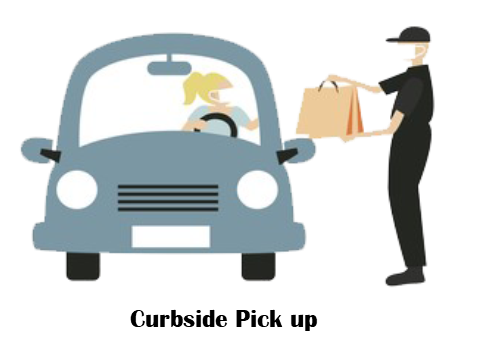
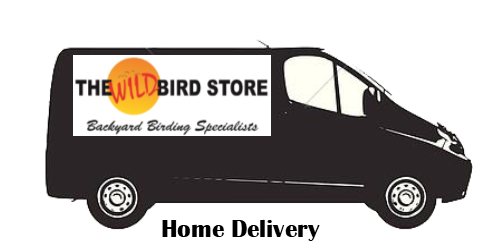

To ensure you get what you want, please have your order in by 5:00pm on Tuesday and we will set it aside for you
Text us @ (403) 701-4571 OR email us at orders@wildbirdstore.ca so we can put your order aside.
Earn and redeem customer loyalty points on
The Bird Seed Truck


DELIVERY: Deliveries will still be made on Thursdays ONLY. Please phone the store at (403) 640-2632 any day prior to 12:00 noon on the Wednesday before your delivery; place and pay for your delivery. Please phone with your order as early as possible to avoid disappointment. If you have any special instructions please do not forget to inform us when you place your order.
We offer a discount if you return your seed bags (sorry—not the Mother Nature bags which we cannot re-use), suet ball containers, if you bring your own container to fill or use a bag from our re-cycle bin. This discount is in addition to any other discount offered.
Write a Google review on your experience at The Wild Bird Store, and as a thank you, we will give you 100 customer loyalty points ($5.00 value). To get a promo code, kindly email info@wildbirdstore.ca
(one Google review per customer)
Earn 200 customer loyalty points ($10.00 value) by referring a friend, acquaintance or fellow birder.
Please visit the store to get a promo code.
Combining our Seniors 10% discount with the Loyalty Program. (Excludes “sales” items, books & optics).
Discount for membership 10% discount for members of Fish Creek Park, AIWC, Priddis Golf Club, Nature Calgary, Sandy Cross Conservation, Springbank Garden Club and Millarville Horticultural Society. Must present valid membership card at time of purchase.
Discount for Military Members & Veterans 10% discount on
purchases in-store or on Mobile Seed Truck (sorry—excludes “sales”
items, books, optics and consignment items)
Didn’t start out as a particularly great day to go birding (the wind was fierce and rain clouds were everywhere on the horizon), but things usually have a way of turning around. After spending almost an hour trying to find the owners of a corgi mom and her 2 puppies which had escaped and were wandering near the highway, we were off again and it didn’t take long to find the birds. Surprisingly, even though there was a vast improvement in the amount of water, the ponds and lakes remained almost completely void of waterfowl and shorebirds. We did catch sight of the Loggerhead shrike, Yellow warblers, Western meadowlarks, lots of Eastern kingbirds and a few Western kingbirds, Eared, Horned and a lifer for me, the pied-billed grebe, lots of Black terns at one lake, but the surprise of the day was visiting one of our favourite birding spots. We came around the corner and there standing on the side of the road was a Great blue heron. Now if you know anything about GBH’s if you slow down or stop—they are out of there immediately. This one did not move. Then we realized in the field beyond where he was standing there were more, and more and more—we ended up counting 28 and all immature! We were completely mesmerized. We had seen groups of GBH adults in British Columbia, but other than at the rookery here in Alberta, we had only seen singles and not very many this year at all. So after about a 1/2 hour of watching we continued on our way promising to pass that way on our way home later in the day.
We saw lots of American white pelicans and Cormorants but they were all hunkered down against the wind. The wind also was no doubt responsible for the lack of waterfowl/shorebirds and their babies as they too could not deal with the wind.
So after driving around on backroads for a few hours it was time to head home. Back to where the GBH had been found. We never thought they would still be there—boy were we surprised! There were now at 35 and they kept coming. They were standing in a field—I thought they resembled grim reapers standing so still with their immature colouring. Something we will never forget. We had learned from a resident who lives across from the lake that the GBH were there because there were invasive Eurasian carp in the lake. A buffet for hungry immatures learning to fend for themselves.
We have had the best year of birding ever and we are so thankful for the rain not only for our gardens and the farmers, but most of all for the birds.
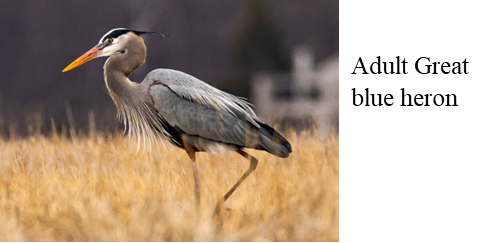
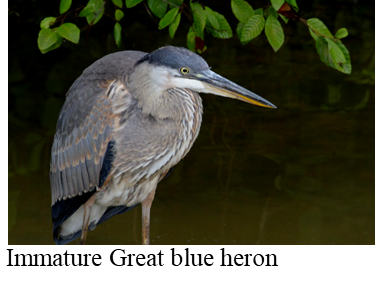
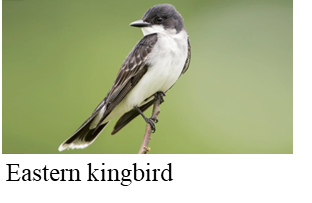
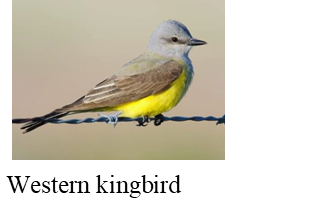
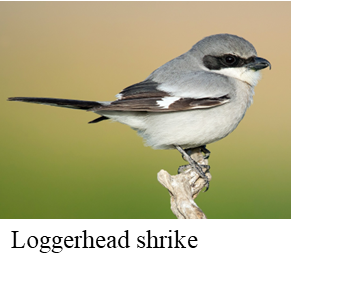
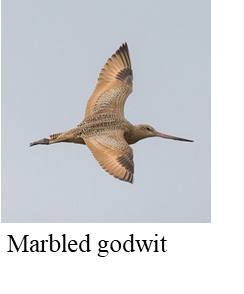
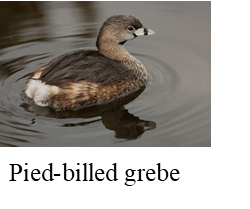

Calgary, AB T2H 1K3 CLOSED Sundays and ALL Statutory holidays for Faith,
Phone: (403)640-2632 Family and Friends. Showroom is open.
email: info@wildbirdstore.ca
FOLLOW US ON: We still offer curbside pickup every day and delivery on Thursdays.
Facebook @thewildbirdstoreyyc
Twitter @wildbirdstoreyyc
Go to YouTube, type in the search bar “The Wild Bird Store” to watch our videos and to help us become more visible . Be sure to click on “Subscribe” before you leave the page.

